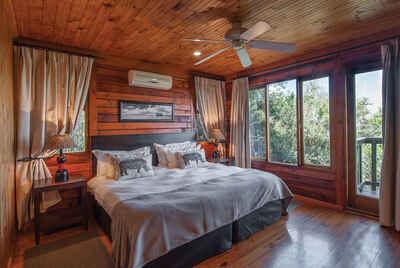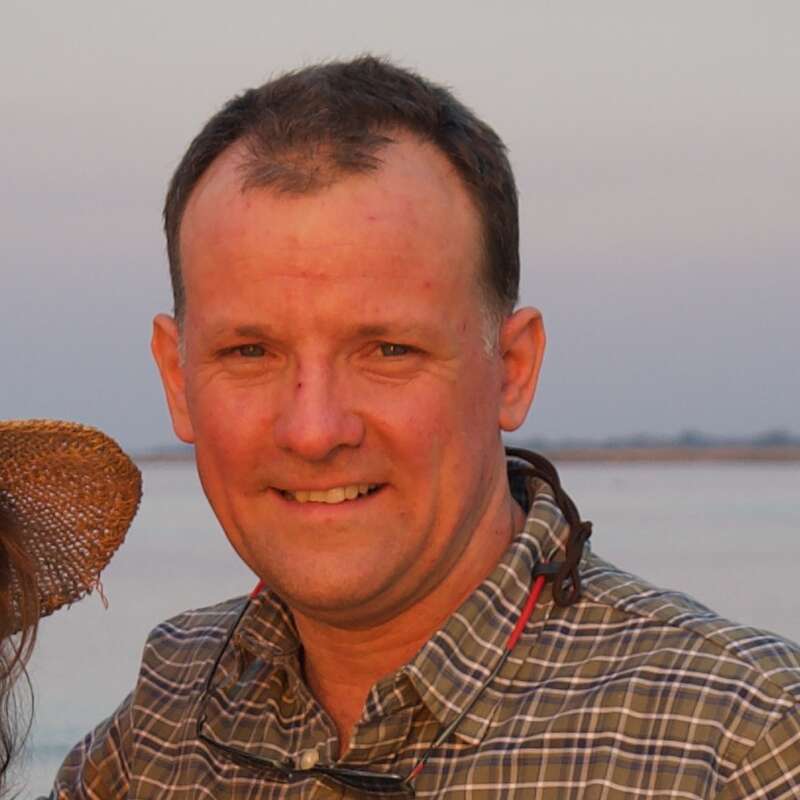About Kariega Main Lodge
Kariega Main Lodge is located in the eastern part of Kariega Game Reserve in South Africa’s Eastern Cape, ...
... where the Kariega River meanders through gently rolling hillsides. It was the first lodge to be built in Kariega Private Reserve, is the most affordable accommodation here and would be the obvious choice for most small families with children considering a visit to this malaria-free area.
Main Lodge is a relatively affordable choice for a game reserve in the Eastern Cape, and markets itself as family-friendly. We enjoyed the high densities of game in the eastern section of Kariega Reserve, the layout of the cabins and especially the log-burner in our cabin! However, Main Lodge and its services, from the kitchen through to the guiding, were disappointing. Although it does accept children, but we don’t regard it as ‘family-friendly’ in terms of safety, quality or flexibility. It’s cheaper than somewhere like Kwandwe’s Ecca Lodge – but in our view not nearly such good value.
Our view
Main Lodge is a relatively affordable choice for a game reserve in the Eastern Cape, and markets itself as family-friendly. We enjoyed the high densities of game in the eastern section of Kariega Reserve, the layout of the cabins and especially the log-burner in our cabin! However, Main Lodge and its services, from the kitchen through to the guiding, were disappointing. Although it does accept children, but we don’t regard it as ‘family-friendly’ in terms of safety, quality or flexibility. It’s cheaper than somewhere like Kwandwe’s Ecca Lodge – but in our view not nearly such good value.
Accommodation
21 wooden chalets
Children
Not recommended for children.
Open
All year
Activities

4WD Safari

Birdwatching

Boat trip

Canoeing

Fishing

Guided walking safari

Private activities
Traveller reviews of Kariega Main Lodge
1 real, un-edited reviews from Expert Africa's travellers.
Arrived 30 Jan 2014, 2 nights
"Kariega Game Reserve"
Overall rating: Good
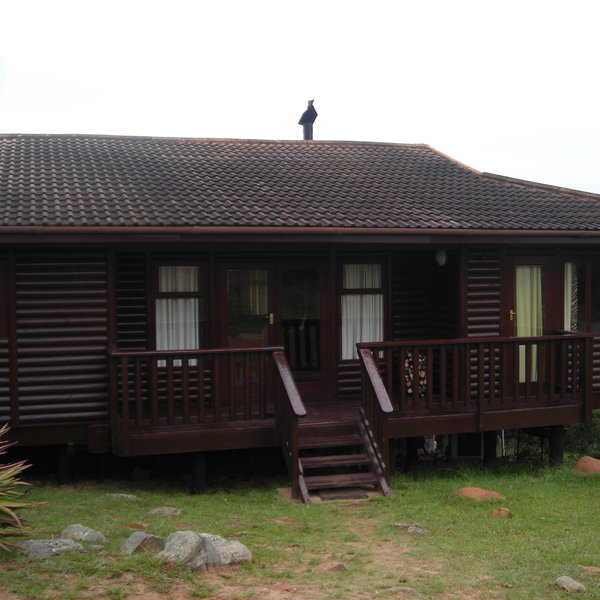
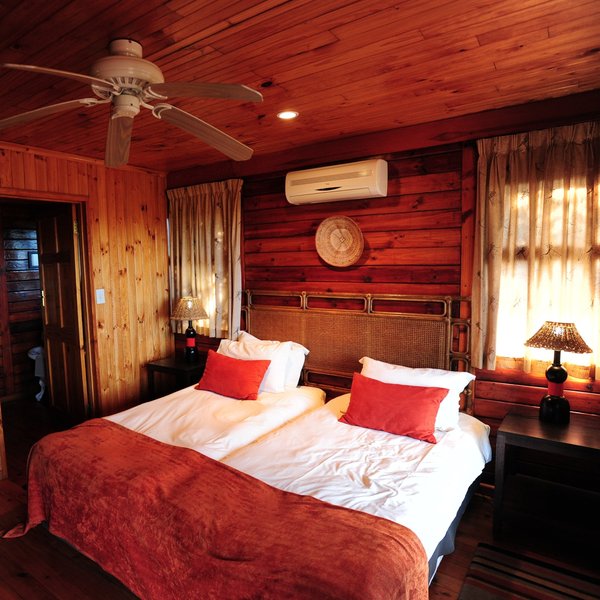
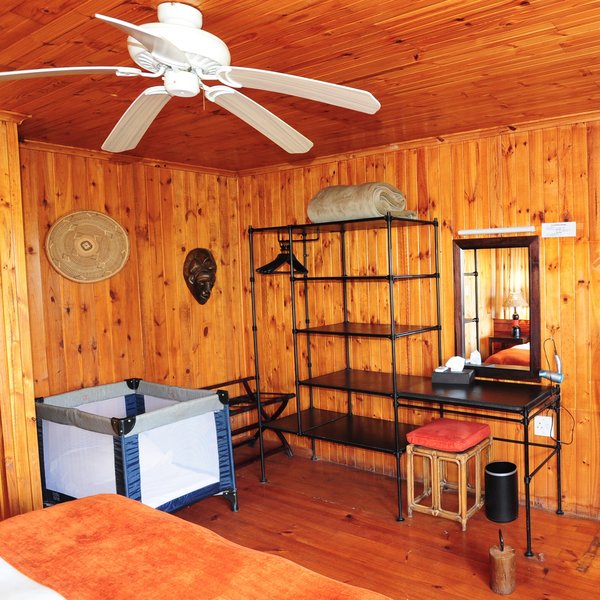
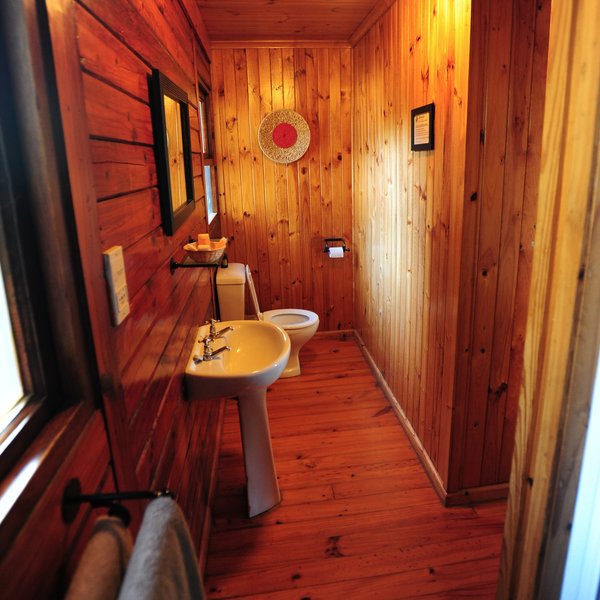
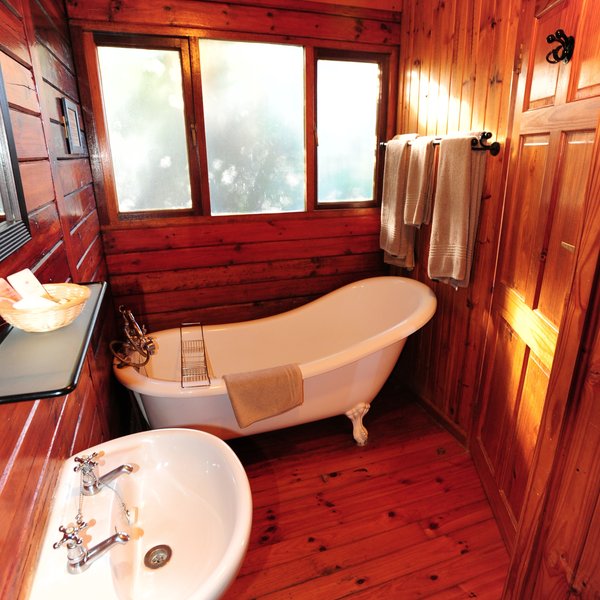
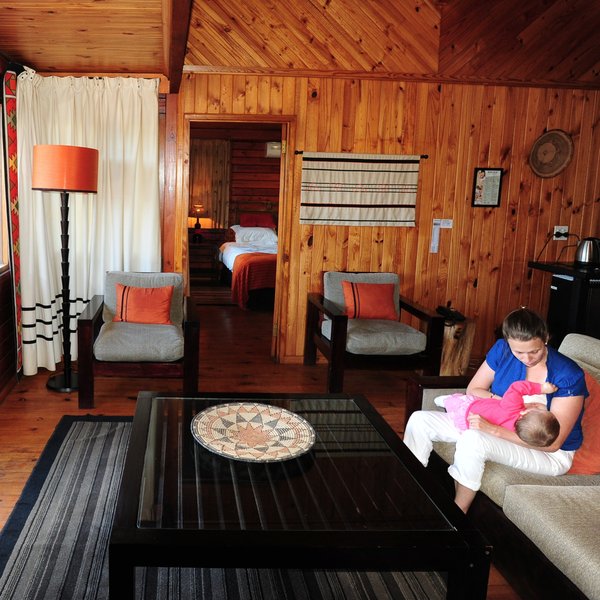
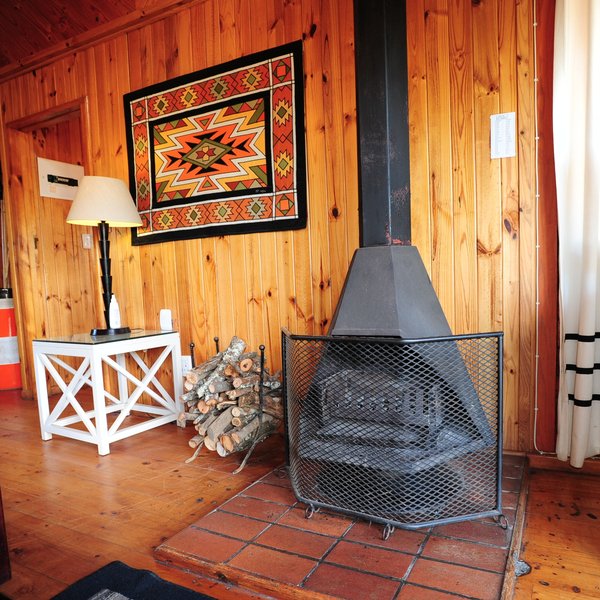
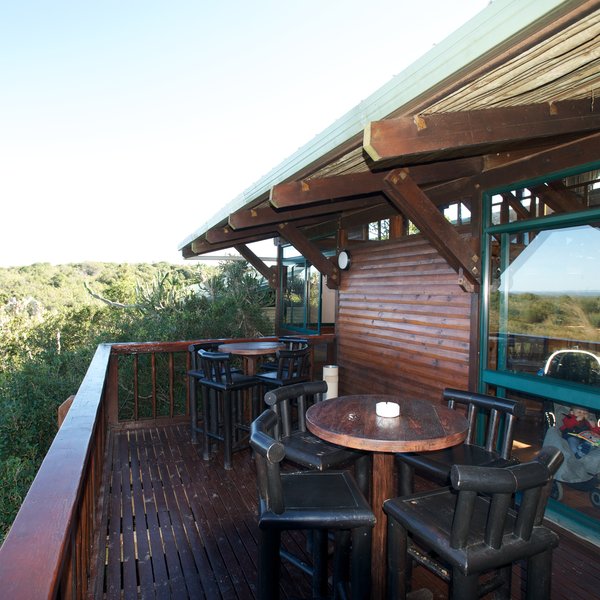
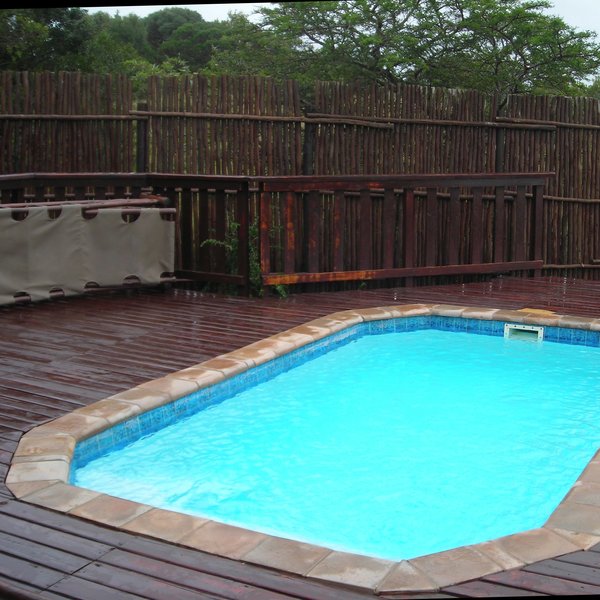
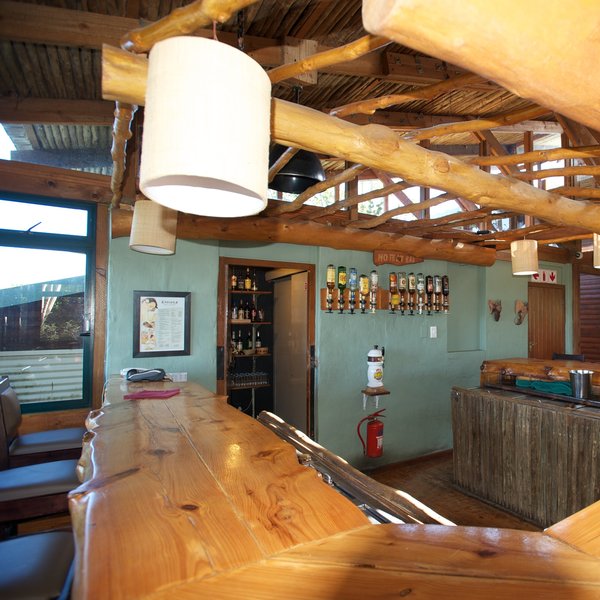
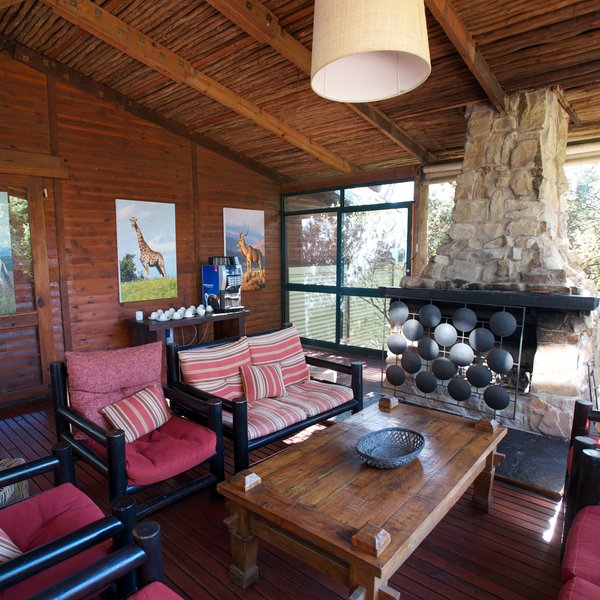
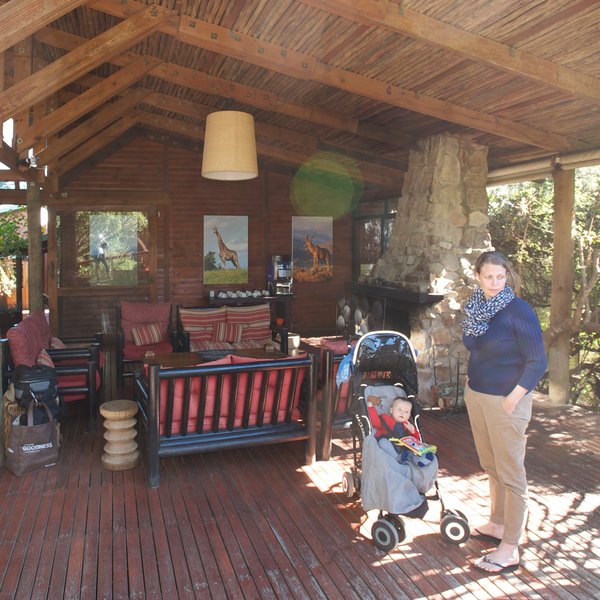
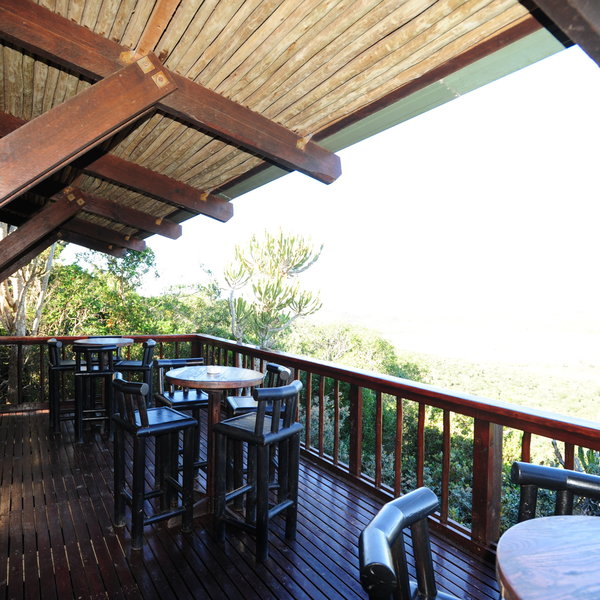
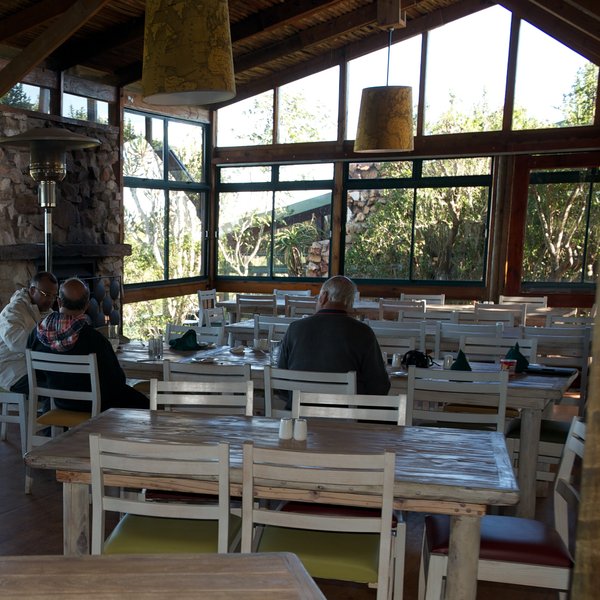
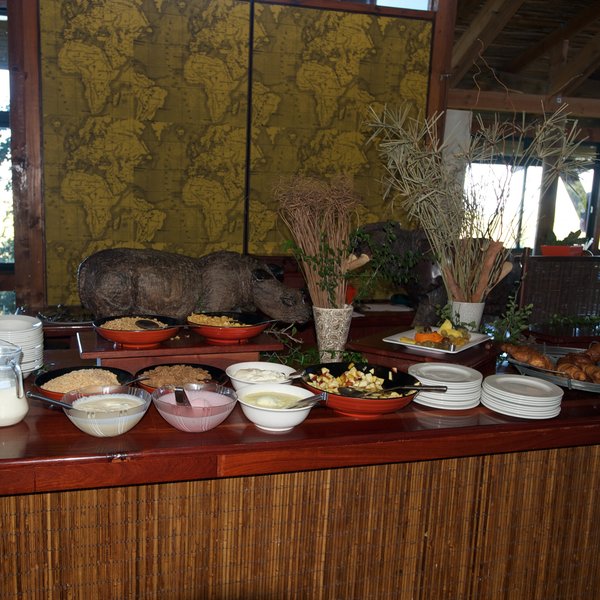
Expert Africa's gallery
When we travel we take lots of photos ourselves to give you a real and un-edited view of the safaris. See our 15 pictures and 1 videos of Main Lodge to get the candid view.
View galleryKariega Main Lodge: Our full report
Kariega Main Lodge is located in the eastern part of Kariega Game Reserve in South Africa’s Eastern Cape, ...
... where the Kariega River meanders through gently rolling hillsides. It was the first lodge to be built in Kariega Private Reserve, is the most affordable accommodation here and would be the obvious choice for most small families with children considering a visit to this malaria-free area.
Kariega Main Lodge consists of 21 air-conditioned log chalets, lined up along the narrow road through the lodge. Each chalet has two separate bedrooms: a double and a twin – and each bedroom has a small en-suite bathroom. Between these is a living area, in which the focus is an old-style sofa and chairs, and a very welcome log-burner – for which kindling and logs are supplied. We loved lighting the fire, and having the warmth in the evenings. Even though the décor was dated, the layout of the bedrooms and lounge was ideal for a small family.
The bedrooms and central lounge look out through windows and glass doors onto a private deck, which has lovely views of the rolling countryside below. In addition, every second chalet has a private pool that can be requested with your booking (subject to availability).
The food here was variable: breakfasts were a good spread; dinners were mediocre and lunches were the low-point. (Read more below.)
The main areas of Kariega Main Lodge comprise a large restaurant, which can accommodate up to about 80 guests, a bar, an outside boma, a curio shop next to the restaurant and a communal swimming pool. There is also a wellness centre with a gym and two rooms for spa treatments. These facilities are all located in the middle of the road from which paths lead to each chalet. Our room, chalet 9, was luckily quite close to the main areas, whereas other travellers had a fairly long walk there.
Travelling with small children, we found the paths linking the chalets and the main areas very bumpy; part of ours was basically a streambed. This made it challenging to negotiate for a toddler, and a real issue with a buggy. This path wasn’t lit at night – and we’d recommend a torch as essential for travellers to this camp. (We were thankful that we brought torches ourselves, but we think these should be provided for guests by the lodge.)
Right next to Kariega Main Lodge, a five-minute walk down the road, is Ukhozi Lodge, whose ten smart, thatched chalets have a more contemporary African feel to them and a private plunge pool and deck each.
As commented, the Kariega Reserve is divided north-south by a public road; the eastern side has no elephant or lion, the western side does have.
Possible activities from Kariega Main Lodge include guided walks, which are relatively safe, since there isn’t a lot of dangerous game in this eastern section of the reserve. Travellers are allowed to explore the ‘Blue Duiker Trail’, which takes about an hour and leads around the neighbouring Ukhozi Lodge, without a guide.
We checked with the guide about dangerous game in this area, and he was confident that there wasn’t any real risk. Further discussions brought up that there were, in fact, buffalo in this eastern part of the reserve – but there were not many. The guide asserted that walking around the camp at night was safe, as these buffalo never seemed to come through camp. We were left with the view that whilst the chances of an encounter with dangerous game here is low, it’s not zero. So we can’t recommend walking around this lodge except to travellers who are very confident in their ability to deal with big game encounters on their own.
In January 2017, we became aware that the guides leading walking safaris at Kariega are not equipped with firearms except when looking for white rhino. In general, we have concerns about walking safaris being conducted in areas where there are high densities of big, dangerous game. Hence we recommend that our travellers don’t go on walking safaris here unless a guide who is both suitably qualified and suitably armed accompanies them.
It’s also worthwhile to go fishing in the Kariega River, on boat cruises or for a picnic lunch on the nearby beaches of Kenton-on-Sea. If you’d like to do some sports, consider mountain-biking or exercising in the gym! For some relaxation, you might indulge into the lodge’s spa.
On game drives there’s a choice of driving around the smaller, eastern section of the reserve which has generally higher game densities, or the larger, western side which has the predators.
When we last visited we were guided by Kariega’s chief guide who, in fairness, was probably more usually in a managerial role than hands-on. He seemed desperate to show us that the reserve had ‘the big five’, and made several long, non-stop dashes across the reserve to get us to a sighting – despite us expressing, on a number of occasions, that we would prefer him to take it slower, comment on just the animals which did appear – be they small or large. We asked clearly for him to do this, but only the most explicit demands were acceded. “I don’t stop for monkeys" was the reluctant retort on one occasion.
By luck we had a private vehicle for the four of us: two adults and two young children. Our requests for him to “guide our three-year-old son, not us" made no difference to his guiding style. He guided the adults, and we had to translate his comments to our (wildlife-savvy) son. Hence we felt that these drives were very far from child-friendly. He showed us what he expected we wanted to see, but wasn’t able to adapt to our, or our child’s, interests.
We did see rhino, elephant and lion over a few days – although we were ‘radioed in’ to most of these sightings, as the reserve has a (understandably) limited number of these animals. We also had a sighting of several bushpig at dusk – a first for all of us – although even this was marred by the guide rushing off to get us to a sighting that he thought we would prefer.
Timing of the drives was fairly rigid, around meal times, night drives were very cold as blankets were too few and too thin, and – most curiously – when asked what drinks we wanted for sundowners, we were told that the lodge’s policy was not to offer gin & tonics: the choice was wine, beer or soft drinks.
Activities
4WD Safari
Birdwatching
Boat trip
Canoeing
Fishing
Guided walking safari
Private activities
Families & children
- Attitude towards children
- Kariega Main Lodge accepts children of all ages.
- Property’s age restrictions
- None
- Generally recommended for children
- Although this area is malaria-free, during our last stay in May 2013 we were left very unimpressed with many aspects of the lodge, including some pretty fundamental Health & Safety questions. Thus we can’t recommend it for families with children.
- Notes
- In the immediate vicinity of the lodge, there isn’t much dangerous big game, however there is some.
Food & drink
- Usual board basis
- Full Board & Activities
- Food quality
- During our most recent stay a Kariega Main Lodge, which was in May 2013, we found the food to be adequate but largely uninspiring.
For our first dinner at Kariega Main Lodge there was a warm plate area with 8 different dishes. We had the choice between a roasted pork joint which was being cut carvery-style, chicken drumsticks, green beans, roast potatoes, a lentil-vegetable-bake in a cheese sauce, poppadums and roti bread.
The presentation of the dishes was institutional: a large quantity of each item in a stainless steel dish with spoons. There was no children’s menu and the lodge clearly struggled with the dietary requirements and preferences of an Indian group staying at the same time.
The next morning, breakfast before the morning game drive consisted of a rather Spartan single plate of muffins with the option of self-service tea and coffee.
Kariega Main Lodge serves two meals between its daily activities. First there was the best meal of the day: breakfast/brunch with scrambled or fried eggs with tomatoes, mushrooms, beans and sausages, as well as a choice of fruits and cereals, some croissants and jam on the table. This was a good spread, with cooked-to-order options.
Then in the early afternoon, around 2 or 3pm, lunch is available. On one occasion, the main course was spaghetti with chicken nuggets, with a dessert offering of some sweets and vanilla ice cream. Travellers who are used to high standards of modern food with plenty of fresh ingredients will find little here to appeal to them.
Our second dinner here was a braai (bar-b-que). Even if the seating outside was a little chaotic, the food was good. However, when we asked if the tomato sauce was spicy, we were told that they didn’t know – and a staff member simply ducked her finger in the sauce, in front of us, and tried it to see.
We suspect that Kariega Main Lodge could save time, effort and money – and have happier travellers – by serving just one more relaxed and flexible brunch after the morning drive, instead of a separate second breakfast and lunch. Then travellers could suffice a few cakes and muffins before the second activity. Like all of these comments, we did put them to the general manager before we left. - Dining style
- Individual Tables
- Dining locations
- Indoor and Outdoor Dining
Getting there
- Location
- Kariega Game Reserve, South Africa
- Ideal length of stay
- Two or three nights is probably the optimum stay here.
- Directions
- Kariega is about an hour and a half by car from Port Elizabeth Airport. Travel northeast on the N2 towards Grahamstown. Approximately 10km before the city, take the tarred turnoff of the R343 to the right and proceed for about 14km until you arrive at the gate to Kariega Main Lodge.
- Accessible by
- Self-drive
Communications
- Communications
- There is an internet connection here, in the main area, which is free of charge for guests staying at Kariega Main Lodge.
Health & safety
- Malarial protection recommended
- No
- Dangerous animals
- High Risk
- Fire safety
Useful info
- Disabled access
- On Request
- Money
- You can leave valuables in the safes at the reception.
Plan and book your trip with Expert Africa
All of our trips are tailor-made, so we'll always adapt them to suit you. Talk to an Expert and let us plan and arrange your perfect trip.

Talk to an Expert
Call or email us now! We’ll match you with the Specialist in our team who is best suited to help you. Then together we can start planning your trip.

Set up your itinerary
Based on our experience and your ideas, your specialist will create a detailed, costed itinerary. We’ll refine it together, until we have a trip that you’re perfectly happy with.

Prepare for your trip
The same Specialist will make the seamless arrangements for your trip, send you detailed travel documents, and be available to answer any questions before you depart.

Travel with peace of mind
After you set off, you’ll be cared for by our partners in Africa, most of whom have worked with Expert Africa for decades. And if you ever need us urgently, we’re available 24/7.

When you return
We love to learn about your trip, and so will always be grateful if you’ve the time to give feedback to your Specialist when you return.
Kariega Main Lodge's location
Look closer at the environment and surroundings of Main Lodge.
Other lodges in Kariega Game Reserve
Alternative places to stay in this same area.
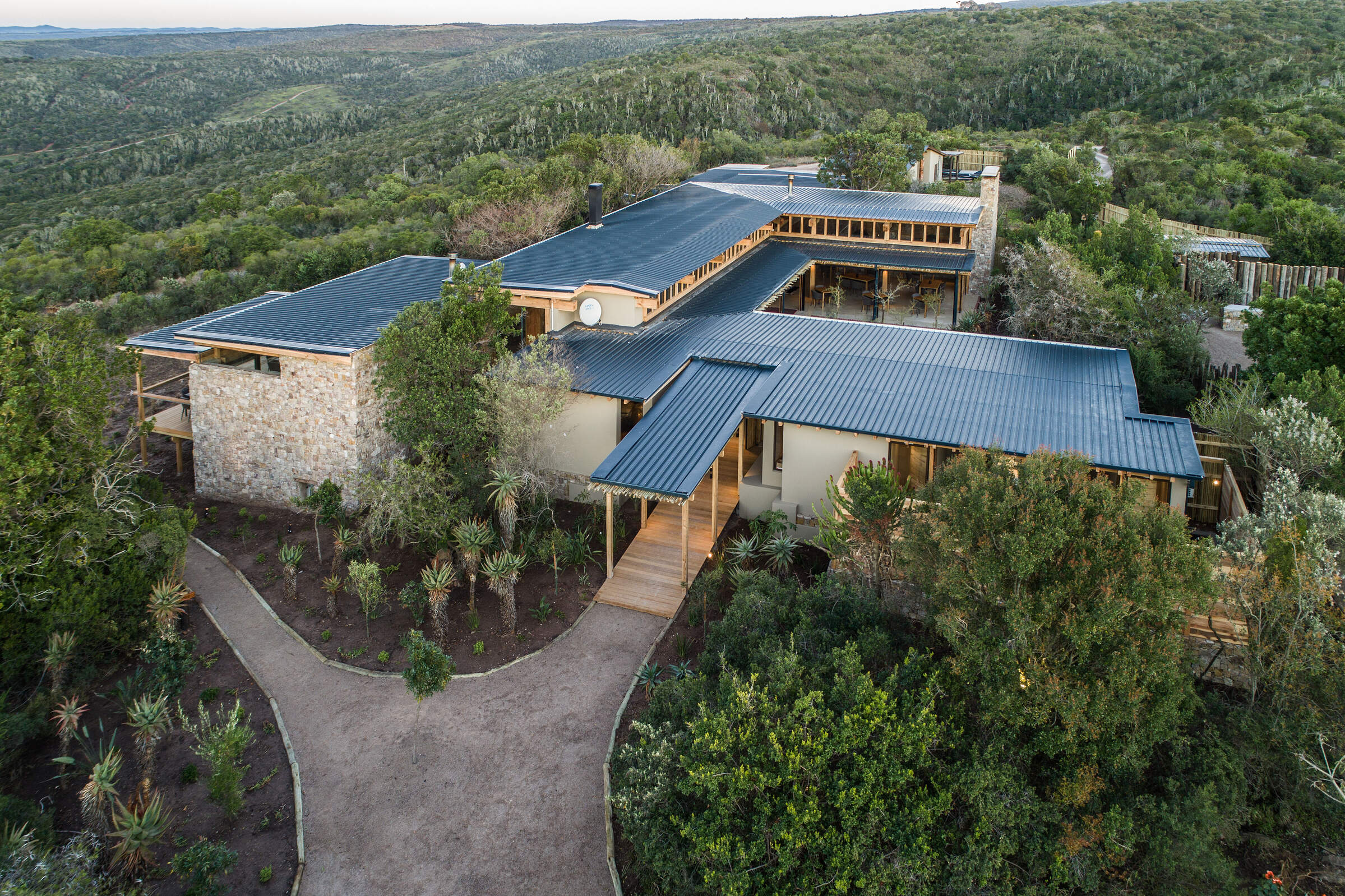
Ukhozi Lodge
Ukhozi Lodge in Kariega Reserve is a pleasant mid-range accommodation and forms an extension to Kariega’s Main Lodge
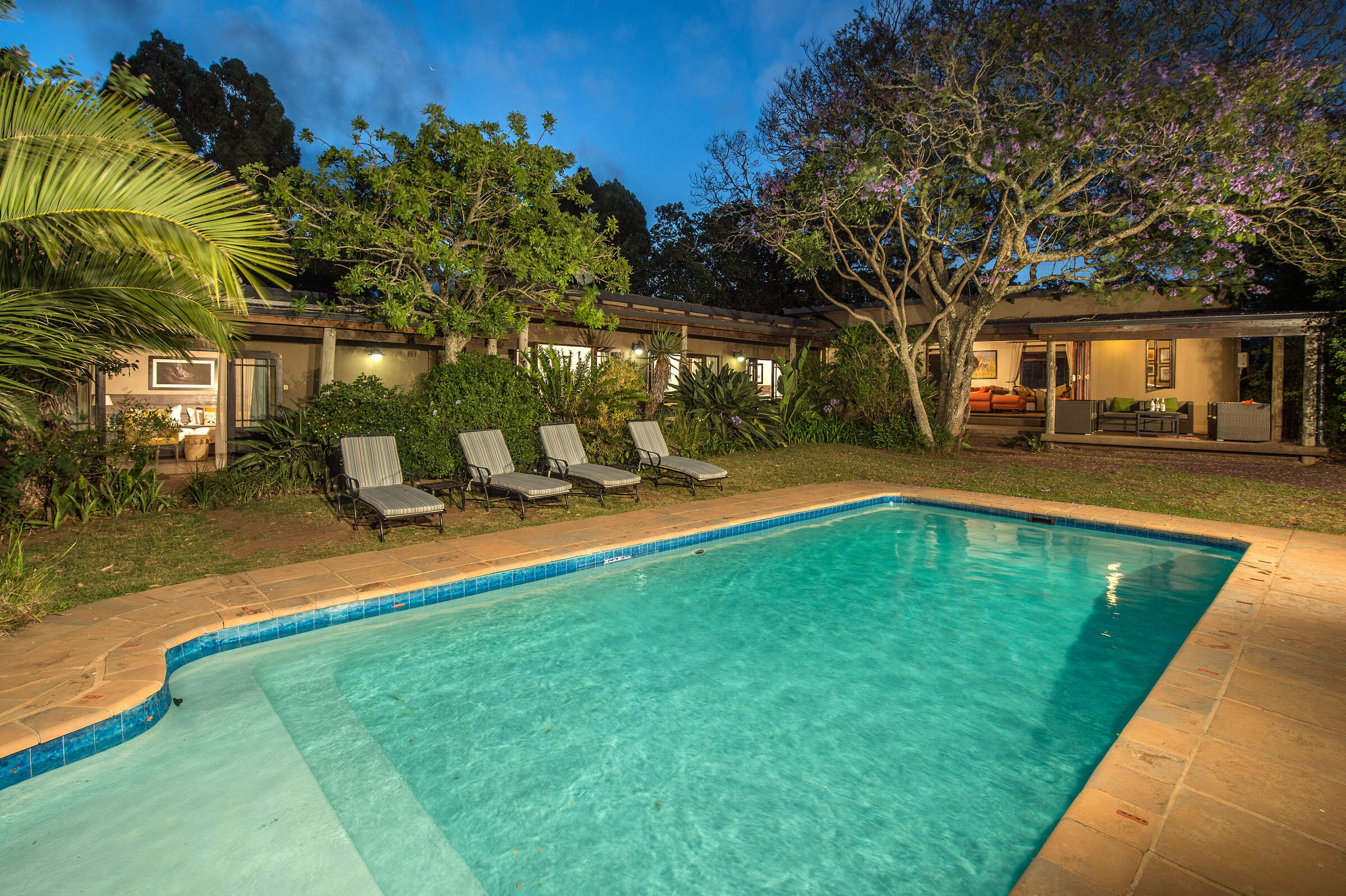
The Homestead
The Homestead, in the far north of Kariega Game Reserve is located in South Africa’s malaria-free Eastern Cape.
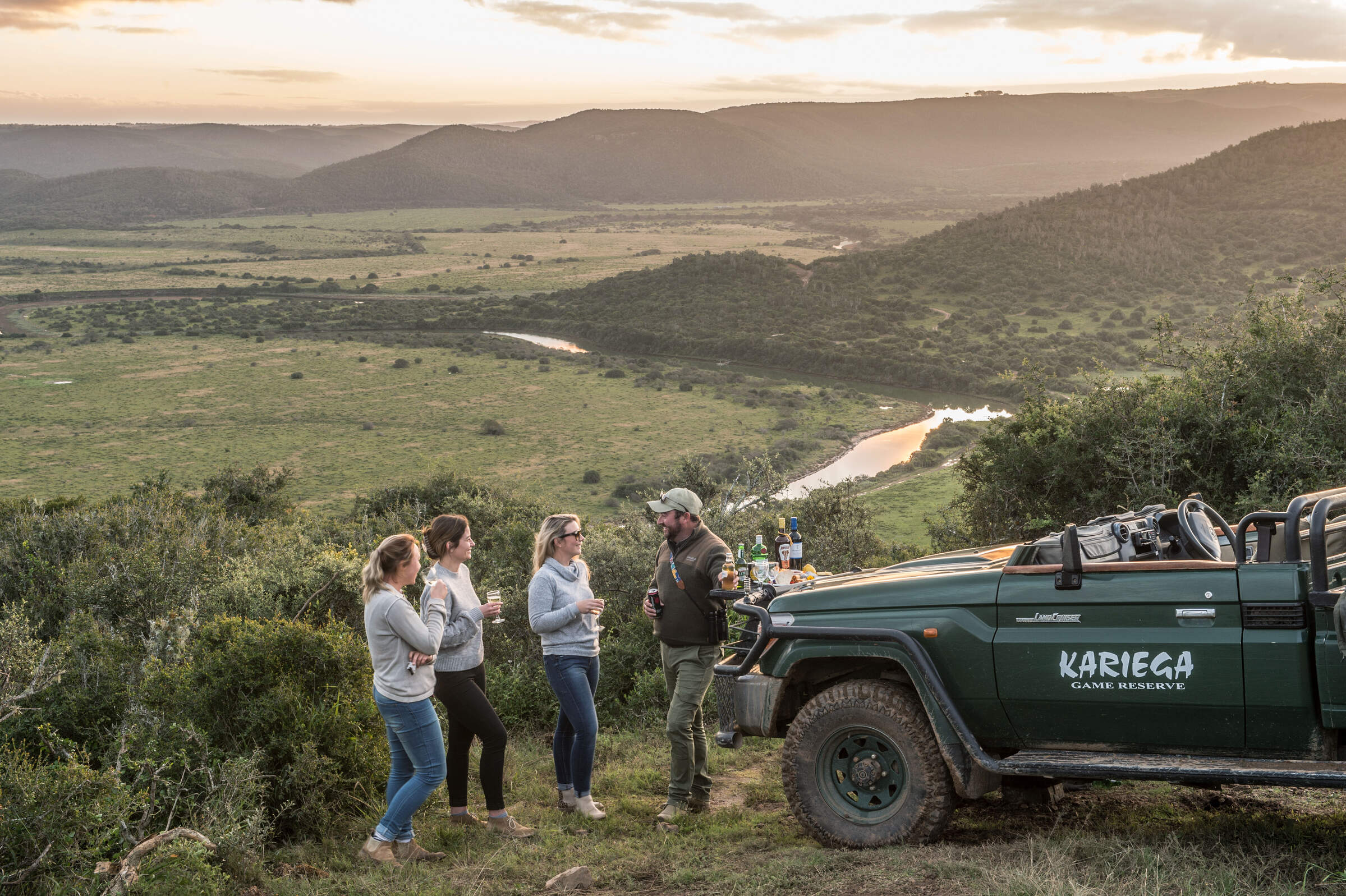
River Lodge
Located on the banks of the Bushmans River Kariega River Lodge offers water-based activities as well as game drives and walking safaris
When to go to Kariega Game Reserve
Our month by month guide: What it's like to visit Main Lodge in Kariega Game Reserve
Jan
Feb
Mar
Apr
May
Jun
Jul
Aug
Sep
Oct
Nov
Dec
South Africa in January
January is considered one of the best months to travel. In Cape Town the weather is hot and generally dry. The Garden Route is also excellent at this time of the year but has a more temperate climate, with slightly lower temperatures and rain can fall at any time of the year. In the Kgalagadi temperatures often top 40°C and short, sharp thunderstorms are also fairly frequent. Wildlife tends to disperse, although birding is excellent.
As this is the high season in the Cape there are numerous events, festivals and outdoor activities to attract visitors. Accommodation books up quickly and it may be necessary to book at least a year in advance. Reservations will often be needed for restaurants and visitor attractions too.
- Hot, largely dry days with clear skies – except on Garden Route
- Wildlife disperses in the Kalahari but birding excellent
- Events, festivals and outdoor activities staged for the high season
- The high season in the Cape, accommodation can cost up to 50% more
- Pre-booking of activities & attractions is essential
Our view
Fantastic: the very best time to visit
Weather in January
South Africa in February
In February conditions are largely the same as in January, although temperatures can be slightly higher, especially in the interior. The wind in Cape Town starts to ease off. Although the Garden Route can experience some rain, the days are pleasantly warm and largely dry.
The Kgalagadi remains very hot, but the birding is still excellent. Wildlife viewing can be tricky especially if there has been some rain, as the resulting long grass can obscure the animals.
For visitors it’s still the high season, but with the local school holidays over and residents back at work, it is less busy than December and January. Accommodation costs remain high and it’s still advisable to pre-book certain activities and restaurants.
- Hot, largely dry days with little cloud
- Wind starts easing in Cape Town
- Slightly less busy than December & January
- Accommodation costs remain high, activities still best pre-booked
Our view
Fantastic: the very best time to visit
Weather in February
South Africa in March
March is still a very good time to visit. Conditions remain dry and very warm in Cape Town, although temperatures start dropping off towards the end of the month. The wind has usually died right down.
The Kalahari remains very hot and in years of good rains vegetation is at its most lush – making wildlife viewing tricky.
Typically, the crowds dwindle, but it can get very busy if Easter falls in March. It is also worth bearing in mind that during major events in March, including the Cape Town Cycle Tour, Cape Epic Mountain Bike Tour, The Cape Town Carnival and the International Jazz Festival, accommodation can get very full.
Attractions remain busy but booking is less essential.
- Temperatures start falling towards the end of the month
- Cape Town hosts a number of world class sport and cultural events
- Wildlife in the Kgalagadi disperses, game viewing more challenging
- Crowds diminish as the high season comes to an end
- Accommodation can get busy during major events
Our view
Fantastic: the very best time to visit
Weather in March
South Africa in April
April is South Africa’s “shoulder” season and is often the most pleasant. Not too hot, not too cold, some rain but not masses. In Cape Town and along the Garden Route days are usually sunny, warm, windless and largely dry, although in Cape Town the chance of rain increases from the end of the month.
In the Kgalagadi the rainy season is typically over and migratory birds are starting to make their journey back up North. Vegetation remains lush but wildlife viewing starts picking up towards the end of the month.
The region is still relatively busy (especially of its still Easter) but it gets quieter towards the end of the month thus availability improves. Accommodation rates start to decrease, and it becomes less important to book restaurants and attractions in advance.
- Temperatures still warm and very pleasant, with little wind.
- Rain starts easing in the Kalahari and migratory birds start to depart
- Less busy, especially towards the end of the month - busy over Easter
- Accommodation frees up and prices start to come down
Our view
A very good time to visit
Weather in April
South Africa in May
May marks the start of the dry season in the Kgalagadi. Days are warm and dry with almost zero rainfall. Night-time/early-morning temperatures can drop towards 0°C. Wildlife viewing is at its peak as animals concentrate around the few remaining water sources.
Days can still be warm and sunny in Cape Town and on the Garden Route, but the weather becomes a lot more variable. May heralds the start of the rainy season in Cape Town and the winelands. Night-time temperatures rarely drop below 10 degrees in the coastal areas.
With far fewer tourists, accommodation prices are at their lowest. There is rarely any need to pre-book activities, but reservations are still advisable at some of the top restaurants.
- Higher chance of rain in Cape Town & the Winelands
- Day time temperatures drop significantly
- Wildlife viewing peaks in the Kgalagadi
- Low season so rarely busy & very few crowds
- Low season rates at the hotels & lodges
Our view
A good time to visit, with pros & cons
Weather in May
South Africa in June
Winter is now in full swing. Maximum temperatures in Cape Town rarely reach 20°C and the rainy season is well under way. Outdoor activities therefore become limited, but a number of high-quality indoor events are organised.
The Garden Route has, in general milder weather and less rain than Cape Town.
June sees the arrival of the first whales which migrate to the South African coastline to give birth.
In the Kgalagadi, daytime temperatures are warm but nights and early mornings are bitterly cold. Wildlife viewing is excellent as animals are drawn to the few remaining permanent water points.
Overall tourist numbers are at their lowest, as are the costs of flights and accommodation.
- Cold & wet weather in Cape Town, Kgalagadi warm days but cold at night
- One of the best months for wildlife viewing in the Kgalagadi
- Whales start arriving to have their calves
- Low visitor numbers & no crowds
- Accommodation & flight prices remain low
Our view
A good time to visit, with pros & cons
Weather in June
South Africa in July
The winter weather continues with very cold nights and early mornings in the Kgalagadi and virtually no rainfall. Vegetation here is really thinning out now and water even more scarce – so wildlife is easy to spot.
Despite the winter and local school holidays, Cape Town remains a great place to visit. On a wet and cold day, the Two Oceans Aquarium, Zeitz Mocca (art museum) and the Cape Town Comedy Club all make for great days out, as does a trip to the wine country or the annual Oyster Festival at Knysna.
By mid-July most of the whales have arrived to give birth. Hermanus is the best place to see them.
At the height of the low season, so accommodation and flight prices remain low.
- Generally cold & wet in the Cape, but good quality indoor events
- Very good wildlife viewing in the Kgalagadi
- Oyster festival in Knysna
- Local school holidays can make places a little busier than usual
- Accommodation and flight prices remain low
Our view
A good time to visit, with pros & cons
Weather in July
South Africa in August
While August experiences mostly wintry weather it does mark the very beginning of spring with temperatures starting to rise. Visitors are drawn to the West Coast and Namaqualand to see the wildflowers, which start blooming in late August and can be seen until mid-September. Whales are still in abundance now too.
The Kgalagadi is now very dry and wildlife vieiwng is still good. Temperatures start climbing towards the end of the month.
Despite the weather , visitor numbers can be high as the northern hemisphere schools close for their summer holidays. It may be a good idea to book certain attractions and restaurants in advance.
Simlarly, although accommodation prices are still low, flight prices can be a little higher than in previous months.
- Temperatures start rising – but still potential for cold & wet weather
- Wildflowers on the West Coast & in Namaqualand
- Good wildlife viewing in the Kgalagadi
- Whales continue to attract visitors
- Can get busy due to northern hemisphere school summer holidays
Our view
A good time to visit, with pros & cons
Weather in August
South Africa in September
Good wildlife viewing in the Kgalagadi continues and daytime temperatures increase quite dramatically. Mornings and evenings are still on the chilly side, but not as cold as they are in June, July and August.
The 1st of September is officially the start of spring in Cape Town. Days become warmer but not quite warm enough to enjoy the city’s beautiful beaches. Venues all over Cape Town play host to various artists during the Cape Town Fringe Festival.
Rainy days are fewer, but night times can still get chilly. Many hotels are still charging low season rates making September great value for money.
Elsewhere, Hermanus hosts the popular annual Whale Festival, and in the West of the Cape, wildflowers continue to bloom until the middle of the month.
- The start of spring; temperatures start rising
- Whale festival in Hermanus
- Cape Town Fringe Ferstival attracts a wide range of artists
- Wildflowers blooming well until the middle of the month
- Good wildlife viewing continues in the Kgalagadi
Our view
A very good time to visit
Weather in September
South Africa in October
The weather starts warming up nicely, Cape Town experiences pleasant days, with much less rain, nights can still be quite cool, but not cold. Some days are now warm enough to enjoy the beach. This is one of the best months to visit the Cape Region.
October is one of the hottest months in the Kalahari. Water remains very scarce, so the wildlife viewing is still very good. Towards the end of the month the odd spectacular thunderstorm is possible with much lightning and thunder. Migratory birds start to arrive, and resident species gear up for the breeding season.
The whales are still present with Hermanus and False Bay the best places to see them.
- Days start warming up; fewer rainy days in Cape Town
- Very hot in the Kalahari – thunderstorms season starts
- Migratory birds start arriving & resident birds start breeding
- Whale watching still excellent in Hermanus and False Bay areas
- Start of the high season, getting busy and accommodation prices rise
Our view
A very good time to visit
Weather in October
South Africa in November
By November Cape Town is experiencing summer conditions with hot, clear days and warm, pleasant evenings. It’s a great month to enjoy the beaches before the peak holiday season in December. There are no real downsides to visiting in November and you may even get a few accommodation specials before prices go up for the festive season. Kirstenbosch Botanical Gardens begins their summer outdoor concerts with local and international artists performing.
The Kgalagadi remains hot but thunderstorms are a bit more regular. With the rains, water sources become more plentiful and wildlife disperses but this is when herbivores such as Springbok start lambing. Photography improves as conditions become less hazy.
This is the last month for regular whale sightings – they tend to migrate back down south by early December.
- Summer now in full swing, with temperatures often reaching 30°C
- Rainy days scarce; evenings warm & very pleasant
- Antelope start lambing in the Kgalagadi; wildlife generally dispersed
- Last month for regular whale sightings
- Good time to visit Cape Town before the peak holiday season
Our view
Fantastic: the very best time to visit
Weather in November
South Africa in December
December is usually Cape Town’s hottest month when temperatures frequently breach 30°C. You can expect hot and cloudless days, and almost no rain but December does see the occasional very windy day.
The Kalahari is still hot, but temperatures are not quite as high as previous months. With the rainfall the bush transforms into various shades of green. Wildlife disperses as water become more widely available.
The Garden Route enjoys warm to hot days with rain at any time but usually not over an extended period.
Mid to late December becomes incredibly busy with concerts, festivals and various outdoor activities in Cape Town. Hotel prices rise, tourist attractions and beaches are crowded and most popular sites and restaurants need to be booked in advance.
- Long, hot sunny days
- Kgalagadi bursts into life as rainy season kicks in
- Wildlife viewing a bit trickier as wildlife disperses
- Cape Town buzzing with concerts, events, festivals etc
- Peak season: attractions get very busy & accommodation costs rise
Our view
Fantastic: the very best time to visit
Weather in December

Looking for inspiration on where to travel next?
Visit our trip chooser to explore your options and find inspiration for your perfect African adventure
Inspire me